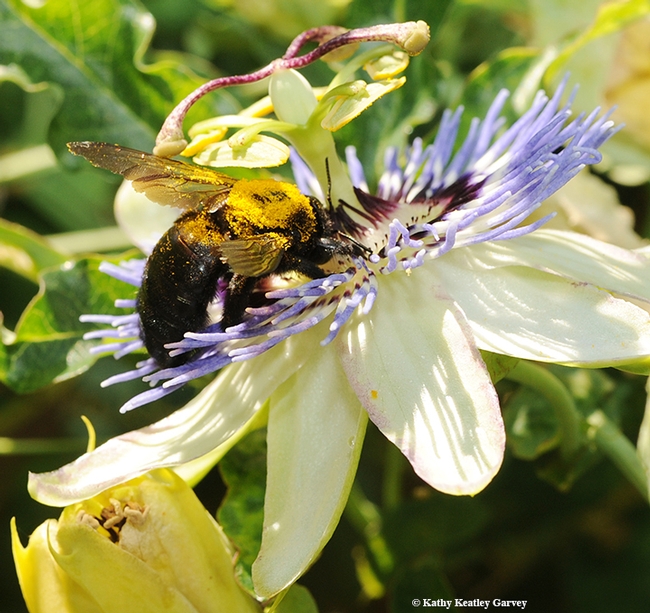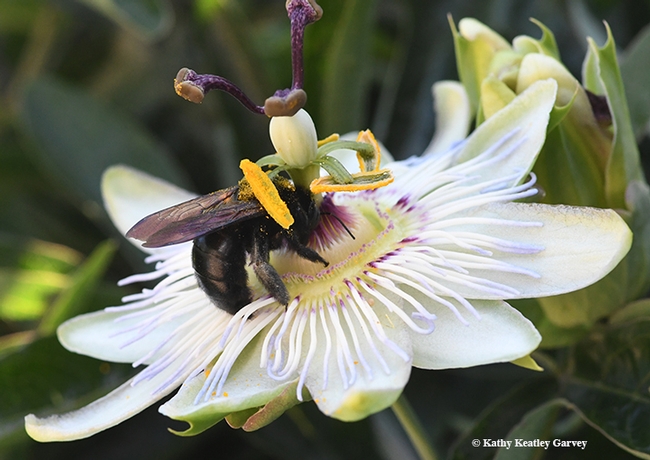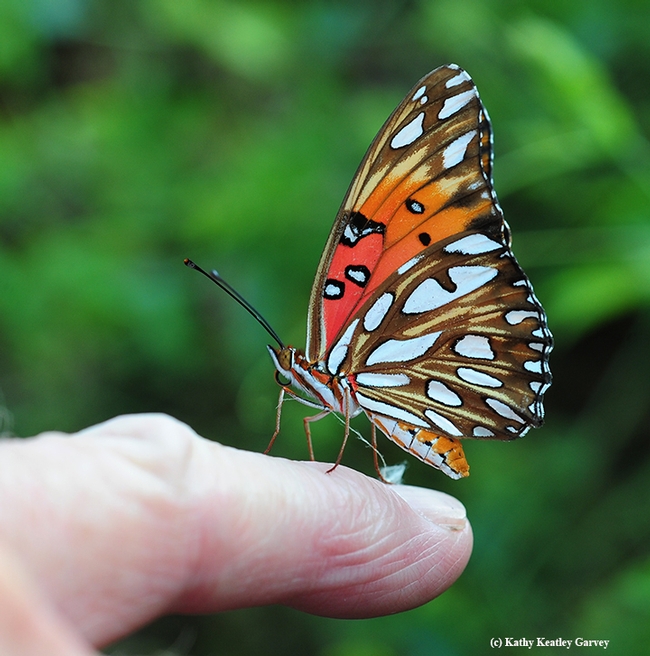The conversation usually starts like this:
"I saw this huge, huge bumble bee with yellow on its back. It was buzzing like crazy."
Often it's not a bumble bee, but the Valley carpenter bee, Xylocopa varipuncta, that's been foraging on the blooms of the passionflower vine (Passiflora).
The yellow "markings?" Tiny yellow grains of pollen.
Valley carpenter bees are passionate about the passionflower vine, a robust climbing vine that's the host plant of the Gulf Fritillary butterfly (Agraulis vanillae).
The Valley carpenter bees are large (about the size of a queen bumble bee). The females are solid black, while the males are golden/buff-colored with green eyes. If you're lucky, you'll see both on your passionflower vine.
Planting Passiflora will usually result in a diversity of visiting species, from butterflies to honey bees to carpenter bees. You'll see Gulf Frits laying their eggs on the leaves and tendrils.
Yes, the vine will cover your fence, but not for long. The Gulf Frit caterpillars will skeletonize the plant. (And that's why we plant ours--for the Gulf Frits.)
Well, also for the other insects, too!
Attached Images:

Gold dust? No, this is pollen covering the thorax of this female Valley carpenter bee, Xylocopa varipuncta, nectaring on the passionflower vine (Passiflora). (Photo by Kathy Keatley Garvey)

Pollen from the passionflower vine is brushing against this Valley carpenter bee. (Photo by Kathy Keatley Garvey)

Close-up of the Gulf Fritillary. Its host plant is the passionflower vine, Passiflora. (Photo by Kathy Keatley Garvey)